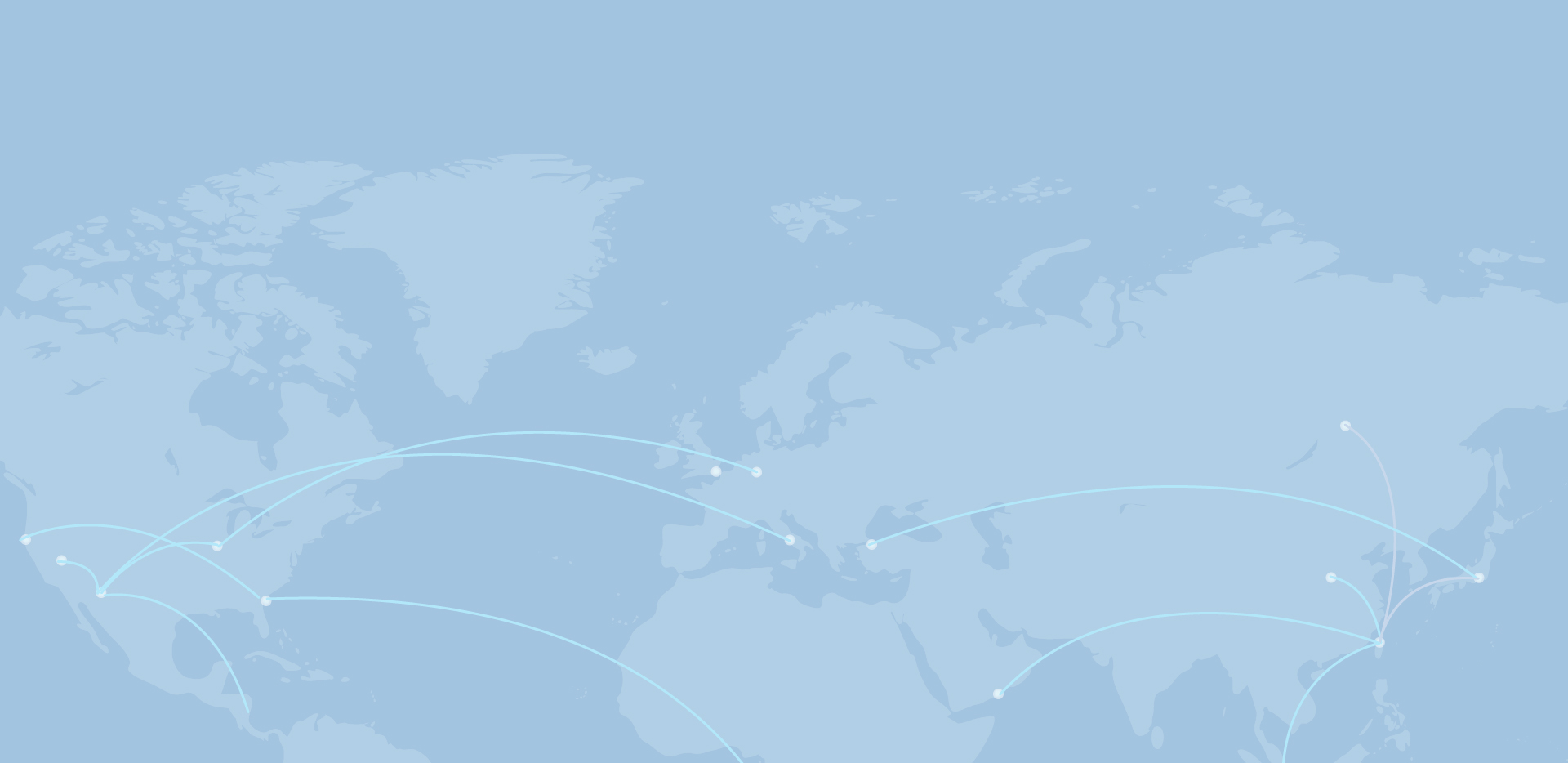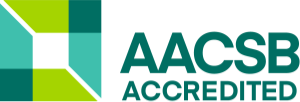| 標題 | 99N24-自我導向學習、人格特質、創造力與工作績效關聯性 之研究-以中華電信公司的業務經理為例 A research on the relationship among self-directed learning,personality traits,creativity and job performance -Taking the example of manager from Chunghwa Telecom business |
| 姓名 | 陳銘正 |
| 指導教授 | 黃義俊 老師 |
| 畢業日期 | 2011/06 |
| 附件檔案 | 99N24 |
| 參考連結 | |
| 摘要 | 公司企業要有好的績效,依據本研究發現,提供建議電信業者如下:1.應該 設計整套適合業務經理的學習訓練課程,做好企業客戶服務,2.遴選業務經理時 要考慮其人格特質是否適合服務企業客戶,3.應該極為重視業務經理實務的創造 力,透過訓練課程的學習、人格特質養成等,以提升業務經理的個人創造力。 |
| 參考文獻 | 一、中文部份 1. http://www.cht.com.tw網站。 2. 丁導民(1996)。空中大學學生自我導向學習準備度、電腦態度與電腦成就 關係之研究。國立中正大學成人及繼續教育研究所碩士論文,未出版,嘉義 縣。 3. 王以實(2006)。人格特質、工作滿足、組織承諾與工作績效關係之研究-以朝 陽科技大學理工學院研究所畢業生為例。朝陽科技大學工業工程與管理系碩 士論文,未出版,台中市。 4. 布明道(2005)。航空公司人員創造力人格特質、組織鼓勵及主管支持與創造 力之相關研究。世新大學觀光學系碩士學位論文,未出版,台北市。 5. 江錦樺(2001)。人格特質與組織文化之適配性對工作績效之影響─以高科 技F公司為例。國立中央大學人力資源管理研究所碩士論文,未出版,桃園 縣。 6. 何青蓉(1996a)。促進學習者自我導向學習。教學輔導季刊,2,7-15。 7. 何青蓉(1996b)。成人學習研究的發展趨勢與幾個待發展的論點。成人教育雙 月刊,34,9-17。 8. 余朝權(2006)。現代管理學。台北市:五南。 9. 余雅屏(2003)。人格特質、自我導向學習以及工作績效之相關性研究。國立 中山大學人力資源管理研究所碩士論文,未出版,高雄市。 10. 吳心寧(2003)。影響知識管理與行政績效關聯性之研究—以縣市政府主計業 務為例。南華大學管理科學研究所碩士論文,未出版,嘉義縣。 11. 吳明隆(2008)。結構方程模式AMOS的操作與應用。台北市:五南。 119 12. 吳秉恩(1992)。管理才能發展方案實施與成效關係之研究。國立政治大學企 業管理研究所博士論文,未出版,台北市。 13. 吳致潔(2003)。創造力、認知型態與研究績效之關係。靜宜大學管理科學研 究所碩士論文,未出版,台中市。 14. 吳桂林(2004)。組織學習、組織創新與組織績效關聯性之研究-以台灣土地銀 行為例。國立屏東科技大學碩士論文,未出版,屏東市。 15. 呂玲誼(2006)。大學生生活經驗與創造思考關係之研究。國立中山大學教育 研究所碩士論文,未出版,高雄市。 16. 呂家美、林佩芬、曹瓊文。高績效人力資源管理措施對工作績效、離職傾向 之影響~以美髮服務業為例。美和技術學院學報,27(2),95~112。 17. 巫玉芳(2003)。人格特質及EQ對於工作績效之分析。義孚大學管理科學研究 所碩士論文,未出版,高雄市。 18. 李大偉、張玉山、張育禎(2006)。企業體驗式的科技創造力教學設計實例。 生活科技教育月刊,39(8)。中國文化大學勞動暨人力資源學系、國立台灣師 範大學工業科技教育學系。 19. 李依蓉(2008)。策略導向、綠色創造力為前置變數探討整合能耐與綠色新產 品競爭優勢關聯性之研究—以台灣地區電機產業為例。國立高雄應用科技大 學商務經營研究所碩士論文,未出版,高雄市。 20. 李治帄(2004)。自我導向學習在企業組織學習之成效研究-以行動通訊產 業為例。朝陽科技大學企業管理系碩士論文,未出版,台中市。 21. 李麗美(2002)。松年大學學員自我導向學習傾向與學習滿意度相關之研究。 國立中正大學成人及繼續教育研究所碩士論文,未出版,嘉義市。 22. 沈許真(2008)。公務人員自我導向學習傾向、網路素養與線上學習成效關係 之研究。國立暨南國際大學成人與繼續教育研究所碩士論文,未出版,台中 市。 120 23. 周惠莉(2003)。五大人格特質、性別角色與轉換型領導關聯性之研究。中原 大學企業管理研究所碩士論文,未出版,桃園縣。 24. 房冠寶(2000)。人格特質與工作績效的關聯性研究:以證券業後勤行政人員 為例。台灣科技大學管理研究所未出版碩士論文,未出版,台北市。 25. 林淑娟(1997)。高雄市市民學苑成人學習者自我導向學習準備度之研究。 高雄師範大學成人教育研究所碩士論文,未出版,高雄市。 26. 林雅芳(2005)。人格特質與創新氣候知覺在創造力發展三階段的交互作用-以I 高科技研究機構為例。國立中央大學人力資源管理研究所碩士論文,未出版, 桃園縣。 27. 林熙丕(2004)。研發人員人格特質與創造力之影響研究--以高科技產業為例。 國立中央大學人力資源管理研究所碩士論文,未出版,桃園縣。 28. 林澄貴(2001)。知識管理、工程專業人員核心能力與工作績效關係之研究-以 中鋼公司為例。國立中山大學人力資源管理研究所碩士論文,未出版,高雄 市。 29. 林菁真、王淑治、甘唐沖滕中瑋(2008)。國立大學職員之休閒行為、工作生 活品質、工作壓力與工作績效之相關性研究。運動休閒餐旅研究 Journal of Sport, Leisure and Hospitality Research,3(3),1-26。 30. 林麗娟(2006)。健保局員工工作壓力、領導型態、人格特質與工作績效關係 之研究。國立成功大學企業管理研究所碩士論文,未出版,台南市。 31. 邱明真(2003)。金融理財專員之核心能力、人格特質與工作績效之相關研究 ─以C 銀行為例。國立中央大學人力資源管理研究所碩士在職專班碩士論 文,未出版,桃園縣。 32. 施惠文(2005)。工作壓力、社會支持與工作績效之相關研究-以高雄市政府員 工為例。國立中山大學人力資源管理研究所碩士論文,未出版,高雄市。 33. 洪世昌(1995)。我國空中大學學生自我導向學習傾向及其與學習成就關係 121 之研究。國立臺灣師範大學社會教育研究所碩士論文,未出版,台北市。 34. 洪麗花、胡書偉、李政達(2010)。策略領導、組織學習與組織績效關聯性之 研究:電影休閒娛樂產業為例。明新學報,36(1),133-154。 35. 紀詵瑩(2002)。企業員工自我導向學習傾向與其知識分享意願關係之研究。 國立暨南國際大學成人與繼續教育研究所碩士論文,未出版,南投縣。 36. 胡湘苓(2008)。以智慧資本觀點探討組織競爭力之研究—以國際觀光旅館為 例。靜宜大學管理碩士在職專班碩士論文,未出版,台中縣。 37. 胡夢蕾、李怡君(2004)。人格特質、學習型態與學習表現關係之研究-以台 灣餐旅教育學生為例。觀光研究學報,10(3)。國立台灣師範大學人類發展與 家庭學系。 38. 范貴鈞(2006)。企業夥伴關係管理與組織競爭力之研究。國立交通大學管理 學院管理科學學程碩士班,未出版,新竹市。 39. 邾亦為(2002)。電子相關產業研發人員創新人格特質研究-強迫選擇題項 式人格量表之建構。國立中央大學人力資源管理研究所碩士論文,未出版, 桃園縣。 40. 唐錦秀(2004)。工作壓力對競爭與員工創造力關係之干擾分析。企業管理學 報,60,115-142。 41. 徐英傑(2003)。公務人員職場自我導向學習、工作調適與工作績效之相關性 研究:以嘉義縣公務人員為例。國立中正大學成人及繼續教育研究所碩士論 文,未出版,嘉義縣。 42. 高玉琳(2002)。員工自我導向學習傾向對組織學習成效的影響-以壽險服 務業為例。朝陽科技大學企業管理研究所碩士論文,未出版,台中市。 43. 婁銘峰(2005)。個人創造力、組織環境及設計績效間之相關性研究。銘傳大 學設計管理研究所碩士論文,未出版,台北市。 44. 張火燦(1992)。策略性人力資源管理,揚智文化事業股份有限公司,台北。 122 45. 張春興(1998)。心理學。台北市:東華。 46. 張淼江(2003)。兩岸員工工作價值觀、工作滿意與工作績效關係之研究--以定 期貨櫃運送業為例。國立成功大學交通管理學系碩博士班,未出版,台南市。 47. 張夢凡(2004)。自我導向學習傾向與學習滿意度對繼續進修意願之研究- 以空中大學高雄地區學生為例。國立中山大學人力資源管理研究所碩士論 文,未出版,高雄市。 48. 張曉慧、李君如(2006)。領導型態、員工成熟度與工作績效、組織承諾關係 之研究-以台中市國際觀光旅館為例。靜宜大學觀光事業學系研究所碩士論 文,未出版,台中市。 49. 張靜慧(2005)。研發人員特質、自我學習導向、創造力與及研發成效之關係 研究。義孚大學工業工程與管理學系碩士班碩士論文,未出版,高雄市。 50. 許志賢、 劉慶湘、李鴻文、陳芬儀(2007)。人格特質與脈絡績效關係之研究 ─以藥劑師為例。管理實務與理論研究,1(1),101–112。亞洲大學、國立 虎尾科技大學、國立嘉義大學。 51. 許博淵(2005)。國家文化差異對工作績效影響之研究-以高科技業菲籍、泰 籍勞工為實證-。國立成功大學高階管理碩士在職專班,未出版,台南市。 52. 陳文聰、謝琬菱(2006)。旅館從業人員人格特質與工作滿意度-以台灣地區 國際觀光旅館為例。95年觀光休閒暨餐旅產業永續經營學術研討會,2-3。 53. 陳旭耀(2006)。管理者自我導向學習傾向、管理才能、工作績效之相關研究-- 以知覺組織支持為干擾變項。國立中山大學人力資源管理研究所碩士在職專 班碩士論文,未出版,高雄市。 54. 陳杏綺(2007)。理財專員的人格特質、時間管理與工作績效之關聯性研究─ 以台南都會區為例。國立成功大學統計學研究所碩士論文,未出版,台南市。 55. 陳姿安(2008)。人格特質與藥廠業務人員工作績效之研究- 以組織文化為調節 變數。國立臺北大學企業管理學系碩士論文,未出版,台北市。 123 56. 陳昭儒(2003)。工作動機、工作投入與工作績效之關聯性研究--以某鋼鐵公司 KT廠為例。國立中正大學企業管理研究所碩士論文,未出版,台北市。 57. 陳貞夙(1995)。空中大學學生成年前家庭成長經驗與自我導向學習準備度之 關係研究。國立中正大學成人及繼續教育研究所碩士論文,嘉義縣。 58. 陳郁汝(2002)。行政人員自我導向學習能力.工作投入與學校行政效能之研 究。國立高雄師範大學碩士論文,未出版,高雄市。 59. 陳惠美(2003)。資訊/電子業駐外行銷人員人格特質和工作績效之關係研究。 大同大學事業經營研究所在職專班碩士論文,未出版,台北市。 60. 陳穎峰、黃義俊、葉葦伶(2008)。組織學習、組織創造力、組織創新與組織 績效關聯性之研究—以台灣地區壽險業的主管為例。樹德科技大學金融與風 險管理系碩士班,未出版,高雄縣。 61. 陳靜怡(2003)。組織氣候認知、員工自我導向學習與工作投入之關係研究- 以某國際快遞公司為例。國立中山大學人力資源管理研究所碩士在職專班碩 士論文,未出版,高雄市。 62. 曾華正(2006)。組織文化、組織變革與組織績效關係之研究—以中華電信南 區分公司為例。國立成功大學工學院工程管理碩士在職專班碩士論文,未出 版,台南市。 63. 黃明玉(2004)。成人學習者自我導向學習傾向、班級學習氣氛與學習滿意度 之研究。國立高雄師範大學成人教育研究所碩士論文,未出版,高雄市。 64. 黃英忠(2003)。現代管理學。高雄市。 65. 黃新元(2008)。人格特質、工作滿意度及工作績效之關聯性研究-以化工產 業為例。國立成功大學高階管理碩士在職專班,未出版,台南市。 66. 黃錦淑(2002)。研發人員的工作設計與工作績效關係之研究-兩種工作特性模 式之應用。國立中山大學人力資源管理研究所碩士論文,未出版,高雄市。 67. 楊帅妃(2003)。人格特質、工作性質與工作績效關係之研究─以實施行動辦 124 公室之企業為例。逢甲大學企業管理研究所碩士論文,未出版,台中市。 68. 楊坤原(2001)。創造力的意義及其影響因素簡介。科學教育月刊,239。中原 大學教育學程中心。 69. 楊國樞、葉光輝、黃莉(1989)。孝道的社會態度與行為:理論與測量。中央 研究院民族學研究所集刊,65,171-227。 70. 楊濡菖(2006)。中華電信行動分公司台中營運處機務人員人格特質、工作態 度與工作績效關係之研究。朝陽科技大學工業工程與管理系碩士論文,未出 版,台中縣。 71. 葉玉珠(2000)。創造力發展的生態系統模式」及其應用於科技與資訊領域之 內涵分析。教育心理學報,32卷,1,95-122。國立中山大學教育研究所。 72. 葉美秀(2006)。業務人員人格特質、專業職能與創造力對顧客滿意度之影響— 以台灣紡織業為對象。天主教輔仁大學織品服裝研究所碩士論文,未出版, 台北縣。 73. 劉家駒、謝美婷(2008)。我國養生村工作人員工作投入、工作滿意、工作壓 力與人員工作績效關係之研究。亞東學報,28,95~104,亞東技術學院。 74. 劉慶洲、余德成、黃建榮(2007)。加工出口區外籍勞工社會支持、海外適應 與工作績效之關聯性研究。中原企管評論,5(2),125-150。 75. 蔣美惠(2004)。探討保全人員生涯管理、人格特質及組織氣候對工作滿足、 自我效能與工作績效之關聯性研究-以台北市保全公司為例。南華大學管力研 究所碩士論文,未出版,嘉義縣。 76. 蔡明秀(2004)。人格特質、工作價值觀、金錢倫理觀與工作生活品質重視度 對生涯導向影響之研究-以台南縣高中職應屆畢業生為例。南華大學管理科 學研究所碩士論文,未出版,嘉義縣。 77. 蔡明昌(2001)。中學教師自我導向學習準備度與其在職進修學習成效關係 之研究。教育研究資訊,9,1-26。 125 78. 蔡明達、沈易利(2010)。運動休閒產業創新經營之道。大專體育,107,24-28 頁。國立彰化師範大學商業教育學院、國立台灣體育學院競技運動學系。 79. 蔡淑玲、張本文(2008)。組織學習與行政效能之研究。學校行政雙月刊。 80. 鄭復源(2010)。人格特質、自我導向學習、組織承諾與工作績效之相關性研 究。東海大學管理研究所碩士論文,未出版,台中市。 81. 鄧運林(1991)。自我導向學習對成人學生學習行為、學業成績影響之實驗 研究。國立政治大學教育研究所博士論文,未出版,台北市。 82. 鄧運林(1995)。成人教學與自我導向學習。台北市:五南。 83. 鄧運林(2000)。開放學習與自我導向學習。隔空教育論叢,12,25-46。 84. 蕭孙辰(2007)。組織文化與組織學習關聯性之研究--以東森得易購為例。銘傳 大學傳播管理研究所研究生,未出版,台北縣。 85. 蕭安成(1998)。隔空與非隔空學習者自我導向學習傾向和學習滿意度之研 究。高雄師範大學成人教育研究所碩士論文,未出版,高雄市。 86. 謝宜君、方世榮、彭彥群(2008)。關係學習、關係記憶及組織學習能力之研 究。管理與系統,15(2),287-321。 87. 魏文欽、朱聖和(2008)。人格特質、工作態度、服務品質、工作績效及顧客 滿意度關連性之實證研究-以國內金融控股公司為例。高雄應用科技大學財 政稅務系專任助理教授、大葉大學事業經營研究所碩士,未出版,高雄市、 彰化縣。 88. 魏國洲(2005)。運用線性關係模式探討領導型態、組織文化、組織學習、全 面品質管理以及組織績效之關係—以高科技產業為例。國立東華大學企業管 理研究所碩士論文,未出版,花蓮縣。 89. 譚彩鳳(2010)。以創新思維應用於Spa美容產業之可行性研究—以波動能量回 復儀為例。美容科技學刊,7(2),7-2-6。經國管理暨健康學院化妝品應用系 助理教授。 126 90. 蘇義祥(1999)。中華電信專戶服務部門領導型態與工作績效關係之研究-服 務人員特質及成熟度的調節作用。中山大學企業管理研究所碩士論文,未出 版,高雄市。 91. 龔永宏(2004)。消防機關緊急救護人員知識管理、專業能力與工作績效之關 係。南華大學管理科學研究所碩士論文,未出版,嘉義縣。 92. 龔盟裕(2007)。高雄市國際觀光旅館從業人員之人格特質、組織文化與工作 績效認知之相關研究。國立高雄應用科技大學碩士論文,未出版,高雄市。 93. 張錫惠(1997)。績效管理。收錄於洪建全基金會編非營利組織經營管理研 修粹要。洪建全基金會,台北市。 94. 董奇(1995)。兒童創造力發展心理。台北市,五南。 95. 賈馥茗(1980)。心理與創造的發展。台北市,台灣。 96. 蘇錦榮(1998)。新竹科學園區資訊電子產業研發人員、技術人員與非科技人 員創造力之研究。國立政治大學科技管理研究所碩士論文,未出版,台北市。 97. Bonoma and Zaltman(1985)。余振忠譯,實用管理心理學,台北市,遠流。 98. Rue,Byars原著(2000)。管理技巧與應用,賀立行譯,前程企業管理公司。 99. 李順能(2005)。組織變革下員工之變革認知、工作態度與工作績效之相關研 究-以A軍用航空發動機修護工廠為例。樹德科技大學經營管理研究所碩士 論文,未出版,高雄市。 100. 曹國雄、黃英忠、黃同圳、張火燦、王秉君(1997)。人力資源管理。台北: 華泰書局。 101. 蔡啟通、黃國隆、高泉豐(2001)。組織因素、組織成員整體創造性與組織創 新之關係。管理學報,18(4),527-566。 102. 林佳慧(2000)。高科技研發人員創造力人格評鑑量表之建立-以I公司為例。中 央大學第六屆企業人力資源管理診斷專案研究成果研討會。 103. 張育菁(2005)。理財專員的專業能力、人格特質與工作績效之相關性。私立 127 東吳大學國際企業學系研究所碩士論文,未出版,台北市。 104. 葉美春、阮明淑(2007)。使用者採用知識管理系統之影響因素研究-理論 模型的比較取向。圖書資訊學刊,5(1/2),69-90。 105. 魏金發、趙志揚(2001)。高職機械類科學生實習課程實施創造思考教學學習 成效之研究。撰者,彰化縣。 二、英文部份 1. Allport, G. W. (1937). Personality: A Psychological Interpretation. New York: Holt. 2. Allport, G. W. (1961). Pattern and Growth in Personality. New York: Holt, Rinehart and Winston. 3. Allport, G. W. and Odbert, H. S. (1936). “Traitnames: A Psycho-lexical Study”, Psychological Monographs, 47, pp.211. 4. Amabile, T. M. (1983). “The Social Psychology of Creativity: A Componential Conceptualization”, Journal of Personality and Social Psychology, 45(2), pp.257-376. 5. Amabile, T. M. (1988). “A Model of Creativity and Innovation in Organizations”, In Staw, B. M. and Cummings, L. L.(Eds.), Research in Organizational Behavior, 10, pp.123-167. Greenwich, CT: JAI Press. 6. Amabile, T. M. (1996). Creativity in Context: Update to the Social Psychology of Creativity. Boulder, CO: West view press. 7. Amabile, T. M. (1997). “Motivating Creativity in Organizations”, California Management Review, 40, pp.40-52. 8. Amabile, T. M., Conti, R., Coon, H., Lazenby, J. and Herron, H. (1996). “Assessing the Work Environment for Creativity”, Academy of Management 128 Journal, 39(5), pp.1154-1184. 9. Bagozzi, R. P. and Yi, Y. (1988). “On the Evaluation of Structural Equation Models”, Journal of the Academy of Marketing Science, 16(1), pp.74-94. 10. Bandura, A. (1969). “Social Learning of Moral Judgments”, Journal of Personality and Social Psychology, 11, pp.275-279. 11. Barrick, M. R. and Mount, M. K. (1991), “The Big Five Personality Dimensions and Job Performance: A Meta-Analysis”, Personnel Psychology, 44(1), pp.1-26. 12. Barron, F. B. and Harrington, D. M. (1981). “Creativity, Intelligence, and Personality”, Annual Review of Psychology, 32, pp.439-476. 13. Baxter, L. Z. (1993). The Association of Self-directed Learning Readiness, Learning Styles, Self-paced Instruction and Confidence to Perform on the Job, Ph.D. diss., University of North Texas. 14. Borman, W. C. and Motowidlo, S. J. (1993a). “Task Performance and Contextual Performance: the Meaning for Personnel Selection Research”, Human Performance, 10(2), pp.99-109. 15. Borman, W. C. and Motowidlo, S. J. (1993b). Expanding the Criterion Domain to Include Elements of Contextual Performance, In N. Schmitt and W .C. Borman (Eds.). San Francisco: Jossey-Bass. 16. Boyd, R. D. and Apps, J. W. (1980). Redefining the Discipline of Adult Education, San Francisco: Jossey-Bass. 17. Brockett, R. G. and Hiemstra, R. (1991). Self-Direction in Adult Learning Perspectives on Theory, Research, and Practice. London: Routledge. 18. Brouther, K. D. (2002). “Institutional, Cultural and Transaction Cost Influences on Entry Mode Choice and Performance”, Journal of International Business Studies, 33(2), pp.203-223. 19. Byars, L L and Rue, L. W. (2000). Human Resource Management, Boston: Irwin McGraw-Hill. 20. Caffarella, R. S. and O’Donnell, J.M. (1987). “Self-Directed Adult Learning: A Critical Paradigm Revisited”, Adult Education Quarterly, 37(4), pp.199-211. 21. Campbell, J. P. (1983). Some Possible Implications of “Model” for the 129 Conceptualization of Measurement, In F. Landy, S. Zedeck, & J. Cleveland (Eds.), Performance Measurement and Theory, Hillsdale, NJ: Lawrence Erlbaum Associates, Inc., pp.277-298. 22. Campbell, J. P. (1990). Modeling the Performance Prediction Problem in Industrial and Organizational Psychology, In M.D. Dunnette & L.M. Hough (Eds.). Handbook of industrial and organizational psychology Vol.2, PP.687-732. CA, Palo Alto: Consulting Psychologists Press. 23. Campbell, J.P. (1983). Managerial Behavior Performance and Effectiveness, N.T.: McGraw Hill. 24. Candy, P.C. (1991). Self-Direction for Lifelong Learning: A Comprehensive Guide to Theory and Practice, San Francisco: Jossey-Bass. 25. Carrigan, S. M. (1989). “An Exploratory Study of the Contribution of Human Resource Development to High Performance among High-Tech Salespeople”, Dissertation Abstracts International-A, 50, pp.1234. 26. Cascio, W. F. (2006). Managing Human Resources: Productivity, Quality of Work Life, Profits, New York: McGraw-Hill, Inc. 27. Castro, S. L., Douglas, C., Hochwarter, W. A., Ferris, G. R. and Frink, D. D. (2003). “The Effects of Positive Affect and Gender on the Influence Tactics-Job Performance Relationship”, Journal of Leadership and Organizational Studies, 10(1), pp.1-18. 28. Cates, C. (1979). “Beyond Muddling: Creativity”, Public Administration Review, 39, pp.527-532. 29. Costa, P. T., Jr., and McCrace, R. R.(1992). Revised NEO Personality Inventory (NEO-PI-R) and NEO Five-Factor(NEO-FFI) Inventory professional manual. Odessa, FL:PAR. 30. Davis, G. A. (1989). “Testing for Creative Potential”, Contemporary Educational Psychology, 14(3), pp.257-274. 31. Dessler, G. (2001). Management, Leading People and Organizations in the 21st. Century, New Jersey: Prentice Hall. 130 32. Development and Learning in Organizations (2003). “New Directions for On-the-job Training in Manufacturing: Enhancing Production Performance Through the Exploitation of Manufacturing Technologies”, An International Journal, 17(1), pp.10-12. 33. Durr, Richard E. (1992). “An Examination of Readiness for Self-Directed Learning and Selected Personnel Variables at a Large Midwestern Electronics Development and Manufacturing Cooperation”, Dissertation Abstracts International-A, 53, pp.1825. 34. Fornell, C. and Larcker, D. F. (1981). “Evaluating Structural Equation Models with Unobservable Variables and Measurement Error”, Journal of Marketing Research, 18, pp.39-50. 35. French, R. (1985). Performance Appraisal:Assessing Human Behavior at Work, Kent Wadsworth, Boston, MA. 36. Garver, C. R. (1996). “Organizational Learning Climate, Self-Directed Learner Characteristics, and Job Performance among Police Officers”, Dissertation Abstracts International-A, 58, pp.1539. 37. Gatewood, R. D. and Field, H. S. (1998). Human Resource Selection, 4th ed. The Dryden Press. 38. Gossman, D C. (1995). “A Study of Trainee Attitude Variables as Related to Locus and Self-Directedness”, Dissertation Abstracts International-A, 56, pp.4257. 39. Gough, H. G. (1979). “A Creative Personality Scale for the Adjective Check List”, Journal of Personality and Social Psychology, 37, pp.1398-1405. 40. Greenberg, E. (1992). “Creativity, Autonomy, and Evaluation of Creative Work: Artistic Workers in Organizations”, Journal of Creative Behavior, 26(1), pp.75-80. 41. Guglielmino, L. M. (1977). Development of the Self-directed Learning Readinessscale, Doctoral Dissertation, University of Georgia. 42. Guglielmino, L. M. and Guglielmino, P. J. (1994). “Practical Experience with Self-Directed Learning in Business and Industry Human Resource Development”, 131 New Directions for Adult and Continuing Education, 64, pp.39-46. 43. Guilford, J. P. (1967). The Nature of Human Intelligence, New York: McGraw-Hill. 44. Guilford, J. P. (1950). “Creativity”, American Psychologist, 9, pp.444-454. 45. Guilford, T. P. (1959). Personality, New York: Megraw-Hill. 46. Hair, J. F., Black, W. C., Babin, B. J., Anderson, R. E. and Tatham, R. L. (2006). Multivariate Data Analysis (5th Ed.), Prentice Hall, Upper Saddle River, NJ. 47. Hall, D. T. and Goodale, J. G.(1986). Human Resource Management Strategy Design and Implement, Scottand Foresmen Cpmpany. 48. Hochwarter, W. A., Kiewitz, C., Gundlach, M. J. and Stoner, J. (2004). “The Impact of Vocational and Social Efficacy on Job Performance and Career Satisfaction”, Journal of Leadership and Organizational Studies, 10(3), pp. 27-40. 49. Jnassen, D. H. (1997). “Instructional Design Models for Well-Structured and Ill-Structured Problem Solving Learning Outcomes”, Educational Technology Research and Development, 45(1), pp.45-94. 50. Jude-York, D. A. (1991). “Organizational Learning Climate, Self-Directed Learners, and Performance at Work”, Dissertation Abstracts International-A, 53, pp.2206. 51. Kane, J. S. and Lawler, E. E. (1976). “Performance Appraisal Effectiveness: ItsAssessment and Determinants”, In B. Staw (eds.), Research in Organizational Bchavior. Vol.1, Ggreenwich, CT: JAI Press, pp.425-478. 52. Kasworm, C. E. (1983). “Self-Directed Learning and Lifespan Development”, International Journal of Lifelong Education, 2(1), pp.29-46. 53. Katz, D. and Kahn, R. L. (1966). The Social Psychology of Organizations, New York: Wiley. 54. Katz, D. and Kahn, R. L. (1978). The Social Psychology of Organizations (2nd ed), New York: Wiley. 55. Kleiman, L. S. (1997). Human Resource Management: A Tool for Competitive Advantage, Minneapolis: West Pub. Co. 132 56. Knowles, M. S. (1975). Self-Directed Learning, New York: Association Press. 57. Knowles, M. S.(1998).The Adult Learner:The Definitive Classic in Adult Education and Human Resource Development, Gulf Publishing company, Houston. 58. Knowles, M. S. (1970). The Modern Practice of Adult Education: Andragogy versus Pedagogy, New York: Association Press. 59. Korman, A. K. (1977). Organization Behavior, Engiewoods, New Jersey: Prentice-Hall. 60. Kratz, L. C. (1980). “Implications of Self-directed Learning for Functionally Illiterate Adults”, Eric Document Reproduction, pp.185-247. 61. Kreitner, R. and Kinicki, A. (2001). Organizational Behavior, McGraw-Hill Companies, Inc. 62. Lee, Y. D., Lain, J. W. and Chen, C. Y. (1999). “A Study on the Measurement of Productivity for White-Collar Employees: A Case of Electronic Industry in Taiwan”, The Chinese Military Academy Journal, 37, pp.345-361. 63. Lindeman, E. C. (1961). The Meaning of Adult Education, New York: Harvest House. 64. Long, H. B. (1989). Self-directed Learning: Emerging Theory and Practice, In H. B. Long and amp; Associates (Eds.), Self-directed learning: Emerging theory and practice. Norman, Okla: Oklahoma Research Center for continuing Professional and Higher Education, University of Oklahoma. 65. Madjar, N., Oldham, G.R. and Pratt, M.G. (2002). “There’s No Place Like Home? The Contributions of Work and Nonwork Creativity Support to Employees Creative Performance”, Academy of Management Journal, 45(4), pp.757-767. 66. Majaro, S. (1988). The Creative Gap: Managing Ideas for Profit, London: Longman. 67. Martindale, C. (1989). Personality, Situation, and Creativity. In J. A. Glover, R. R. Ronning and C. R. Reynolds (Eds.), Handbook of creativity: 211-32. New York: Plenum. 68. McCrae, R. R., Costa, P. T. and Busch, C. M. (1986). “Evaluating 133 Comprehensiveness in Personality Systems: The California Q-Test and the Five-Factor Model”, Journal of Personality, 54(2),pp.430-446. 69. McMahon, M. and Oliver, R. (2001). Promoting Self-regulated Learning in an on-Line Environment, ED-Media 2001 World Conference on Educational Multimedia, Finland. 70. Mezirow, J. (1985). “Concepts and Action in Adult Education”, Adult Education Quarterly, 35(3), pp.142-151. 71. Moore, M. G. (1973). Speculations on a definition of independent study. Proceedings of continuing Education a Conference on Independent Learning, W. K. Kellog Report 7. Vancouver: Center for Continuing Education, University of British Columbia. 72. Moore, M. G. (1980). “Independent Study”, In Boyd, R. D., Apps, J. W. & associates (Eds.) Redefining the Discipline of Adult Education. San Francisco: Jossey-Bass. 73. Nunnally, J. C. (1978). Psychometric Theory (2nd ed). New York:Mac Graw-Hill. 74. Oddi, L. F. (1986). “Development and Validation of An Instrument to Identify Self-Directed Continuing Learners”, Adult Education Quarterly, 36(2), pp.97-107. 75. Oldham, G. R. and Cummings, A. (1996). “Employee Creativity: Personal and Contextual Factors at Work”, Academy of Management Journal, 39, pp.607-734. 76. Parnes, S. J. (1967). Creative Behavior Guidebook, New York: Scribner. 77. Pedler, M., Burgoyne, J. and Boydell, T. (1991). The Learning Company. New York : McGraw-Hill. 78. Porter, L. W. and Lawler, E. E. (1965). “Properties of Organization Structure in Relation to Job Attitudes and Job Behavior”, Psychological Bulletin, 64, pp.23-51. 79. Ram, A. and Leake, D. B. (1995). Goal-driven Learning. London: A Bradeford Bood. 80. Rhodes, M. (1961). An Analysis of Creativity. Phi Delta Kappan, pp.305-310. 81. Robbins, S. P. (1998). Organizational Behavior (8th ed.), Upper Saddle River, NJ. 134 Prentice Hall International. Doctoral Dissertation, University of Georgia. 82. Sandsbury, F. C. (1996). The Relationship of Self-directed Learning Orientation and Goal Setting Perceptions to Job Performance of Penn State County Extension Directors, Doctoral Dissertation, Pennsylvania State University, Dissertation Abstracts International-A, 57, pp.3361. 83. Schermerhorn, J. R. (1989). Management for Productivity (3rd ed.), New York: John Wiley and Sons. 84. Schermerhorn, J. R. (1999). Management, New York: John Wiley and Sons. 85. Schmit, M. J., Kihm, J. A. and Robie, C. (2000). “Development of a Global Measure of Personality”, Personnel Psychology, 53(1), pp.153-193. 86. Scott, R. K. (1995). “Creative Employees: A Challenge to Managers”, Journal of Creative Behavior, 29(1), pp.64-71. 87. Scott, W. G. and Mitchell, T. R. (1972) Organization theory: A structural and behavioral analysis. Homewood, Ill.: Irwin. 88. Scott, S. G. and Bruce, R. A. (1994). “Determinants of Innovative Behavior: A Path Model of Individual Innovation in The Workplace”, Academy of Management Journal, 37(3), pp.580–607. 89. Senge, P. M. (1990). The Fifth Discipline: The Art and Practice of Learning Organization, New York: Bantam Doubleday. 90. Shalley, C. E. (1991). “Effects of Productivity Goals, Creativity Goals, and Personal Discretion on Individual Creativity”, Journal of Applied Psychology, 76, pp.179-185. 91. Shalley, C. E. (1995). ”Effects of Coaction, Expected Evaluation, and Goal Setting on Creativity and Productivity”, Academy of Management Journal, 38(2), pp.483-503. 92. Siau, K. L. (1995). “Group Creativity and Technology”, Journal of Creative Behavior, 29(3), pp.201-216. 93. Sternberg, R. J. and Lubart, T. I. (1991). “An Investment Theory of Creativity and Its Development”, Human Development, 34, pp.1-31. 94. Sternberg, R. J. and Lubart, T. I. (1995). Defying the Corwd: Cultivating 135 Creativity in a Culture of Conformity, Simon & Schuster, New York. 95. Szilagyi, A. D. and Wallance, M. J. (1987). Organizational Behavior and Performance, Glenview, Ill.: Scott, Foresman. 96. Tough, A. M. (1966). “The Assistance Obtained by Adult Self-Teachers”, Adult Education, 17, pp.30-37. 97. Tough, A. M. (1978). “Major learning efforts: Recent research and future direction”,Adult Education, 28(4), pp.250-263. 98. Tough, A. M. (1979). The Adult’s Learning Projects, Toronto: The Ontario Institute for Studies Education. 99. Wallach, M. and Kogan, N. (1965). Modes of Thinking in Young Children. Westport, CT: Creenwod Press. 100. Wallas, G. (1926). The Art of Thought, New York: Franklin Watts. 101. Wang, W. W., Wu, J. J. and Horng, R. Y. (1999). “Creative Thinking Ability, Cognitive Type and R&D Performance”, R&D Management, 29(3), 247-254. 102. Wang, X. and others. (1989). The Factor Structure of the Self-Directed Learning Readiness Scale, (SDLRS) (Eric Document Reproduction Service No. ED314437). 103. Wexley, K. N. and Klimoski, R. (1984). “Performance Appraisal: An Update”, Research in Personnel and Human Resources Management, Grenwich, CT:JAI Press, 2, pp.35-79. 104. Wright, T. A. and Staw, B. M. (1999). “Affect and Favorable Work Outcomes: Two Longitudinal Tests of the Happy-Productive-Productive Worker Thesis”, Journal of Organizational Behavior, 20, pp.1-23. 105. Wright, T. A., Larwood, L. and Denney, P. J. (2002). “The Different Faces of Happiness-Unhappiness in Organizational Research: Emotional Exhaustion, Positive Affectivity, Negative Affectivity and Psychological Well-Being as Correlates of Job Performance”, Journal of Business and Management, 8, pp.109-126. |
查看次數:
432




 高雄科技大學
高雄科技大學 企管EMBA
企管EMBA 網站導覽
網站導覽